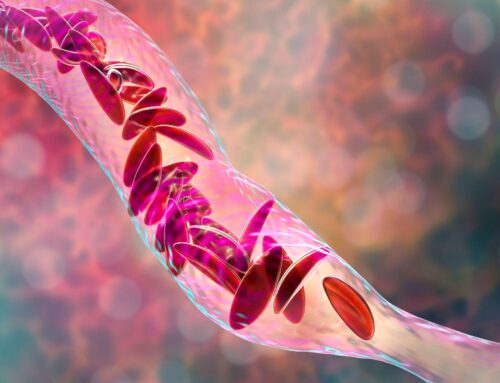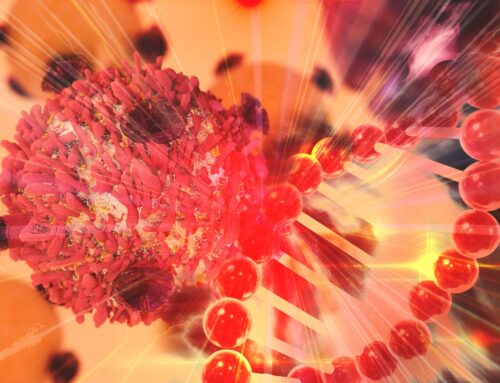Looking for something?
The First FDA Approval for a GalNAc-conjugated ASO

It starts with a pins-and-needle sensation in your feet, or maybe your gastrointestinal tract has become easily irritated, or you’ve started to lose weight or develop heart problems. Hereditary ATTR amyloidosis can present differently among patients and with symptoms found in far more common diseases, so it is often misdiagnosed. Fortunately, treatment for the disease is expanding, with the most recent therapy offering an at-home solution.
On Dec. 21, 2023, AstraZeneca and Ionis Pharmaceuticals announced the FDA approval of Wainua (eplontersen) for the treatment of the polyneuropathy of hereditary transthyretin-mediated amyloidosis (hATTR-PN) in adults. This drug is the first GalNAc-conjugated ASO and is the first and only treatment for the disease that can be self-administered via an auto-injector. Wainua received approval within a near-record 6 years from starting clinical research.
hATTR: a disease that is challenging to diagnose
Hereditary transthyretin amyloidosis (hATTR) is a serious condition that impairs the peripheral nervous system due to mutations in the transthyretin (TTR) gene (1). The TTR gene encodes the transthyretin protein, which is mainly produced by the liver and is responsible for transporting vitamin A (retinol) and thyroxine throughout the body (1). TTR gene mutations cause dissociation during transthyretin protein folding, resulting in the abnormal monomer protein called amyloid. The disease, which has an adult-onset, is characterized by extracellular deposits of these amyloid fibrils throughout the body’s organs and tissues, with the peripheral nervous system, heart, and kidney typically the most damaged organs (1, 2). As the amyloids accumulate, the tissue damage intensifies, resulting in peripheral nerve damage with motor disability within five years, and without treatment, death typically within ten years.
The condition is commonly described by its predominant clinical features, either polyneuropathy (hATTR-PN) or cardiomyopathy (hATTR-CM). However, most patients have symptoms of both nerve and heart involvement (1). The disease, which manifests in a variety of ways, is notoriously challenging to diagnose, with symptoms ranging from gastrointestinal tract disturbances to heart problems. As a rapidly progressive disease that causes significant disability and a worsening quality of life, a delayed diagnosis can be devastating.
However, the presence of progressive peripheral sensorimotor neuropathy and at least one of the following is indicative of hATTR: autonomic dysfunction, bilateral carpal tunnel syndrome, gastrointestinal complaints, unexplained weight loss, and cardiac hypertrophy. Additionally, one of the most tell-tale signs of hATTR is neuropathy that begins at the toes and moves up. A rapid disease progression and absent response to previous therapies for misdiagnosed conditions is also a common sign.
Khella explains that genetic testing is the only way to confirm if patients with suspected hATTR or those with a family history carry a genetic mutation. The accurate and easy genetic testing can also eliminate the need for more invasive procedures like the traditional nerve biopsy.
TTR mutations: the influence of geography, gender, and genetics
More than 130 genetic mutations have been found to cause hATTR, the most common being the p.V50M mutation, formally known as V30M, which is largely present in Portugal, Spain, France, Japan, and Sweden (1). The TTR gene is located on chromosome 18 and is composed of four exons (1). A point mutation of the gene that results in the substitution of methionine for valine at position 30 of the mature protein — known as V50 mutation — is responsible for around 50% of cases of the disease worldwide and is particularly common in endemic areas (1, 2). Patients with the V50 mutation usually present with peripheral sensory, motor, and autonomic neuropathy starting in their 20s or 30s, while in non-endemic areas, more severe motor impairment and cardiac involvement are more common in late-onset patients (1, 2). The most common genetic mutation in the United States is p.V1421, which is often present in African Americans.
The driving influence of hATTR age-of-onset and phenotypic expression in families with V50 mutations is unknown. However, genotype, geographic origin, and the gender of the parent from whom the mutation is inherited can influence the variability in disease onset and phenotypic expression (1). According to three different studies done in Portugal, Japan, and Sweden, men are more likely to have an earlier onset and more frequently experience the cardiac type of hATTR (1). Researchers speculate that the female sex hormone may provide cardioprotective effects in women with familial ATTR.
In northern Portugal, the rate of hATTR is estimated to be 1 in every 158 people but drops to 1 in every 100,000 people for those of American or European descent. The global prevalence of the condition is estimated to be around 50,000 people. However, some studies suggest it is under-recognized and misdiagnosed. With the increasing awareness of the disease among physicians and the availability of genetic testing, the known rate of hATTR amyloidosis is expected to climb, especially in non-endemic regions (1).
“People with hereditary transthyretin-mediated amyloid polyneuropathy, and other forms of amyloidosis, are often misdiagnosed since symptoms can mirror other conditions,” said Isabelle Lousada, President and CEO of Amyloidosis Research Consortium, adding that the path to an accurate diagnosis can be “a long, arduous journey,” and that a timely diagnosis is critical.
The evolving treatments for hATTR: from invasive surgery to auto-injection
A little over three decades ago, ATTRv-PN was considered incurable, and the only option for patients was to manage their symptoms until the disease gradually took over (2). However, in 1993, the first liver transplant for the disease was performed in Sweden. The surgery replaced the main source of mutant TTR with a more stable wild-type variant that slowed the disease progression and dramatically increased life expectancy (2). Since then, thousands of patients have undergone this treatment, but with the evolution of pharmacotherapy, the surgery is now considered exceptional (2).
TTR stabilizers include Diflunisal, a non-steroidal anti-inflammatory drug that stabilizes TTR by interfering with the binding site, and Tafamidis, which inhibits the first dissociation step of the amyloidogenic cascade (2). Although Tafamidis is approved in Europe, Asia, and South America, it was rejected by the FDA (2). Other TTR stabilizers like Acoramidis and Tolcapone are being studied for the treatment of ATTR (2).
As Wainua enters the market this year, it faces competition from Alnylam Pharmaceuticals Onpattro (patisiran) and Amvuttra (vutrisiran), which are also approved to treat hATTR. Onpattro was approved in 2018 and is administered via intravenous infusion every three weeks. In June 2022, the biotech company received approval for their second hATTR drug, Amvuttra, to come on the market, which is delivered every 3 months by subcutaneous injection. Although requiring monthly injections, Wainua’s ability for self-administration, compared to Amvuttra’s administration by healthcare professionals, has the potential to position it as a popular option.
Wainua isn’t Ionis’s first foray into treating the nerve damage caused by ATTR amyloidosis and is a second-generation version of its drug Tegsedi (inotersen), which was approved in the U.S. and Europe to treat the nerve damage that the disease causes. Unfortunately, Tegsedi’s clinical testing showed certain side effects, like low platelet counts, that Onpattro didn’t.
Wainua shares the same nucleotide sequence as Tegsedi. However, it is Ionis’s first drug using ligand-conjugated (LICA) technology to deliver ASOs to target cells while also using a triantennary N-acetylgalactosamine moiety (GalNAc3) which increases the drug’s potency, allowing patients to receive lower doses, less frequently than patients treated with Tegsedi. A more precise and wider-reaching drug, Wainua is expected to be more successful than its predecessor, which had to be administered weekly, while Wainua is monthly.
Onpattro and Amvuttra are both siRNA-based oligonucleotide therapies. Onpattro is an unmodified siRNA, encapsulated in a lipid nanoparticle formulation that requires IV administration. Amvuttra’s siRNA–GalNAc conjugate features an enhanced stabilization chemistry design that, compared to Onpattro, provides increased potency and high metabolic stability, allowing a subcutaneous injection once every 3 months (3). Although an ASO rather than an siRNA, Wainua uses the GalNAc conjugate approach that proved successful in Amvuttra.
These drugs aren’t without their side effects, with both Wainua and Amvuttra warning that the treatment lowers vitamin A levels, which can affect vision. So, daily vitamin A supplements are recommended.
Finally, CRISPR-Cas9 and monoclonal antibody therapy are also being studied as potential ATTR treatments. NTLA-2001, a single-dose treatment using CRISPR, has demonstrated that it was well tolerated and caused a sustained drop in TTR levels (2). In October 2023, the FDA cleared Intellia Therapeutics’ Investigational New Drug (IND) application to initiate a phase 3 trial for NTLA-2001 in the treatment of ATTR with cardiomyopathy.
Positive data paved the way for approval: Wainua study shows halted disease progression
The approval for Wainua is based on the positive 35-week interim analysis from the Phase 3 NEURO-TTRansform study, which demonstrated that patients treated with Wainua had a halted disease progression and continuously improved quality of life; the promising results were published in The Journal of the American Medical Association (JAMA) showing that the benefits of Wainua continued at 66 and 85 weeks.
Compared to the external placebo group, at 66 weeks, the Wainua-treated patients showed improvement across all three co-primary endpoints of serum transthyretin (TTR) concentration, neuropathy impairment, and quality of life. At 85 weeks, the end-of-treatment analysis showed continued benefits.
The drug also showed a mean reduction of 82% in TTR serum concentration from baseline at 65 weeks and a halted disease progression with a 0.3 mean increase at week 66. In comparison, the placebo group exhibited an 11% TTR serum reduction and a 25.1 increase in disease progression. Overall, 47% of treated patients showed improvements in neuropathy at 66 weeks compared to 17% in the placebo group. Among study completers, 53% of treated patients showed improved neuropathy at 66 weeks versus 19% of the placebo group. Additionally, 58% of treated patients and 65% of study completers showed quality of life improvements at 66 weeks compared to 20% and 23% in the external placebo group, respectively.
Throughout the trial, the drug displayed favorable safety and tolerability, with the rate of adverse events in the Wainua group comparable to that of the placebo group.
Sami Khella, M.D., Chief of the department of neurology at Penn Presbyterian Medical Center, professor of clinical neurology at the Perelman School of Medicine at the University of Pennsylvania School of Medicine and a principal investigator on the NEURO-TTRansform trial, said the favorable data positions the drug to be an empowering potential new medicine for those with hATTR, a condition that previously had limited treatments.
Extensive study looks into Wainua’s ability to treat cardiomyopathy symptoms
Ionis and AstraZeneca partnered in late 2021 to develop and commercialize Wainua for all types of amyloid transthyretin. However, the drug is currently only approved for the treatment of polyneuropathy caused by hATTR. While most TTR mutations cause a nerve or mixed phenotype, some variants manifest with predominant or isolated cardiomyopathy (1), which is a more common and lethal form of the condition that typically leads to progressive heart failure and death within three to five years from onset. Wainua is in its Phase 3 trial to evaluate its effectiveness for transthyretin-mediated amyloid cardiomyopathy. The study has more than 1,400 patients — making it the most extensive study in this patient population.
Transformative Medications
Medications like Onpattro, Amvuttra, and Tegsedi are responsible for a sweeping change not only in how the disease can be treated but also in how patients live their lives. Now, Wainua’s approval is transforming the field again with its at-home injections that make treatment more accessible for patients struggling with the symptoms of hATTR. Its use of LICA technology to deliver ASOs to target cells while also using a triantennary N-acetylgalactosamine moiety (GalNAc3) to increase the drug’s potency, allows patients to receive less frequent and lower doses than Tegsedi. Additionally, the future of not only Wainua but also Amvuttra aims to expand the effectiveness of the drugs in treating the debilitating and often fatal symptoms of cardiomyopathy.
References
- Luigetti M, Romano A, Di Paolantonio A, Bisogni G, Sabatelli M. Diagnosis and Treatment of Hereditary Transthyretin Amyloidosis (hATTR) Polyneuropathy: Current Perspectives on Improving Patient Care. Ther Clin Risk Manag. 2020 Feb 21;16:109-123. doi: 10.2147/TCRM.S219979. PMID: 32110029; PMCID: PMC7041433.
- Vélez-Santamaría V, Nedkova-Hristova V, Morales de la Prida M, Casasnovas C. Hereditary Transthyretin Amyloidosis with Polyneuropathy: Monitoring and Management. Int J Gen Med. 2022 Dec 20;15:8677-8684. doi: 10.2147/IJGM.S338430. PMID: 36573111; PMCID: PMC9789700.
- Adams D, Tournev IL, Taylor MS, Coelho T, Planté-Bordeneuve V, Berk JL, González-Duarte A, Gillmore JD, Low SC, Sekijima Y, Obici L, Chen C, Badri P, Arum SM, Vest J, Polydefkis M; HELIOS-A Collaborators. Efficacy and safety of vutrisiran for patients with hereditary transthyretin-mediated amyloidosis with polyneuropathy: a randomized clinical trial. Amyloid. 2023 Mar;30(1):1-9. doi: 10.1080/13506129.2022.2091985. Epub 2022 Jul 23. PMID: 35875890.
“The views, opinions, findings, and conclusions or recommendations expressed in these articles and highlights are strictly those of the author(s) and do not necessarily reflect the views of the Oligonucleotide Therapeutics Society (OTS). OTS takes no responsibility for any errors or omissions in, or for the correctness of, the information contained in these articles. The content of these articles is for the sole purpose of being informative. The content is not and should not be used or relied upon as medical, legal, financial, or other advice. Nothing contained on OTS websites or published articles/highlights is intended by OTS or its employees, affiliates, or information providers to be instructional for medical diagnosis or treatment. It should not be used in place of a visit, call, consultation, or the advice of your physician or other qualified health care provider. Always seek the advice of your physician or qualified health care provider promptly if you have any healthcare-related questions. You should never disregard medical advice or delay in seeking it because of something you have read on OTS or an affiliated site.”








